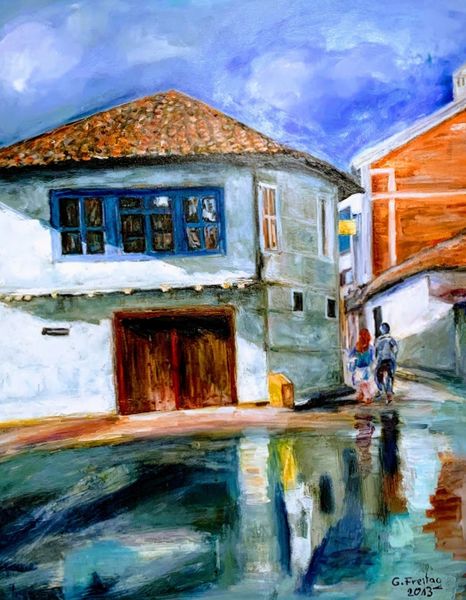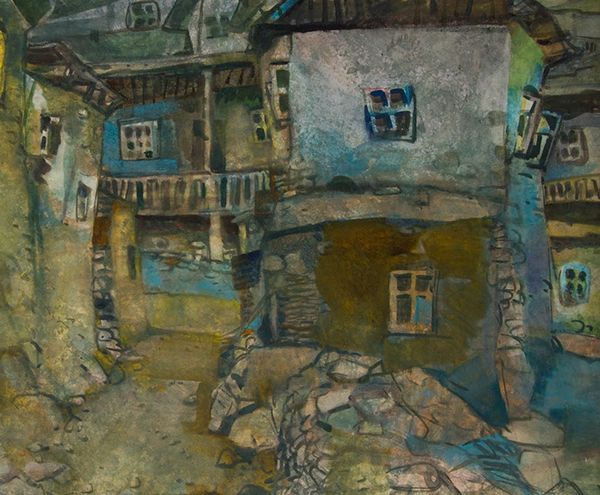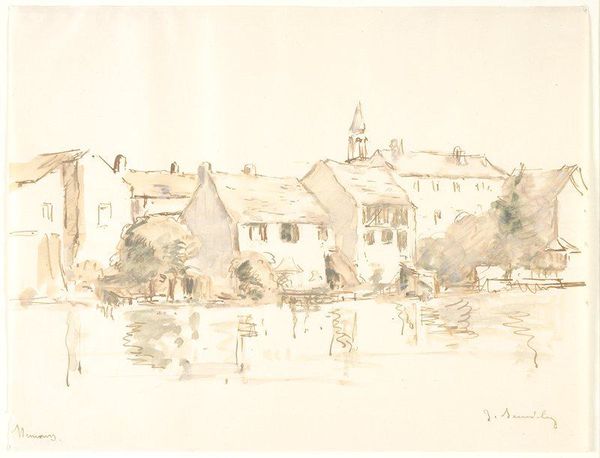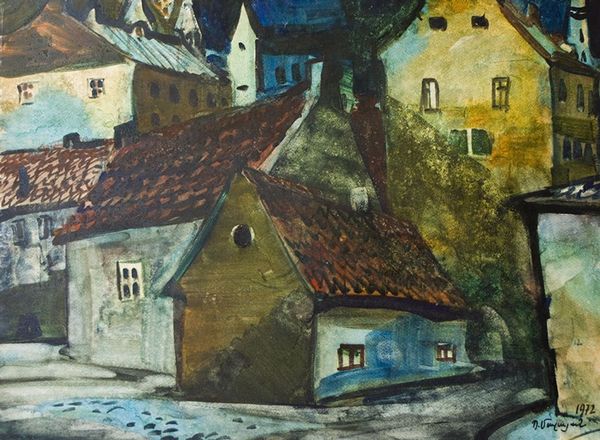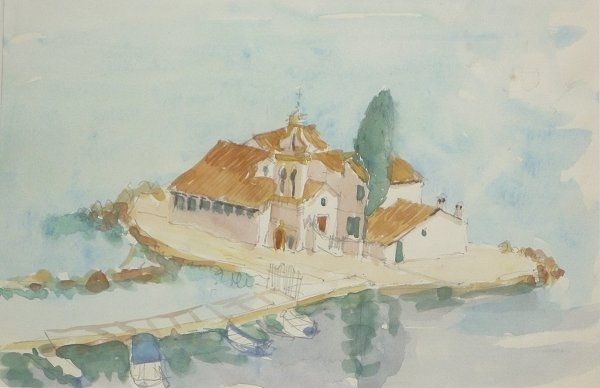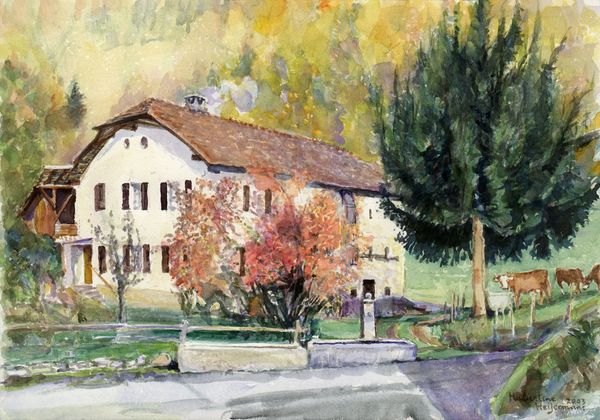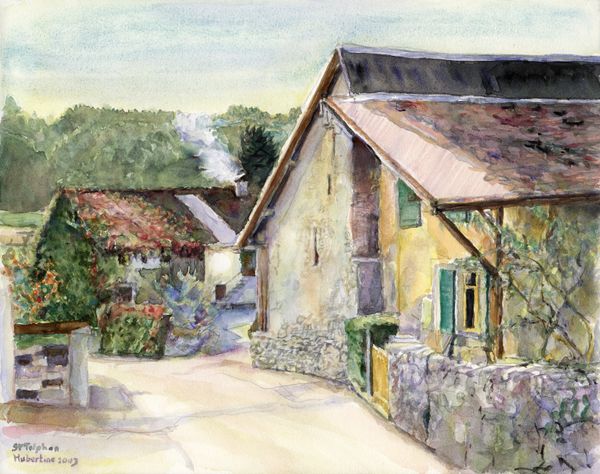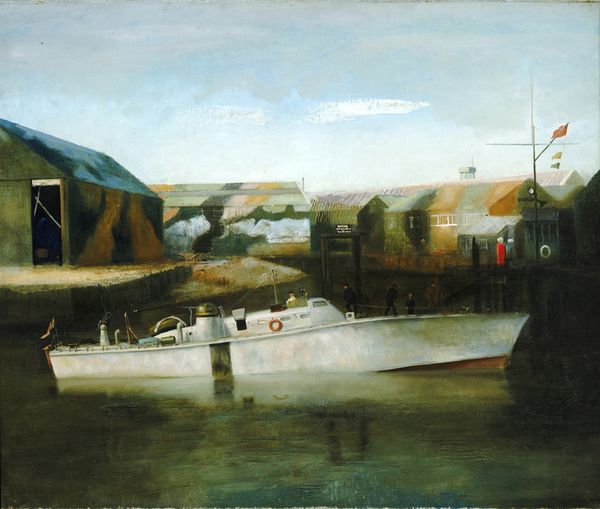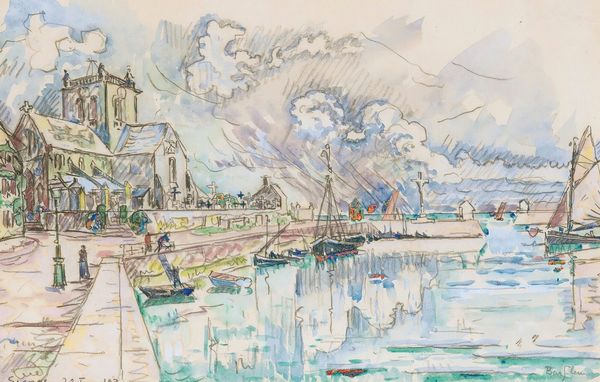
Copyright: Public domain
Editor: This is "The Kapellbrücke, Lucerne" by John Ruskin, created in 1861, seemingly using watercolors. The reflections in the water are just gorgeous, but there's also this strong emphasis on the architecture itself. What catches your eye when you look at this piece? Curator: The prominent display of the wooden bridge immediately suggests concerns with labour, trade, and material exchange. The fact that Ruskin is documenting this specific structure speaks volumes. This wasn't simply about creating a picturesque landscape; he's interested in the bridge as a functional object, as an element inextricably linked to the lives and economies of the people using it. How do you think the choice of watercolor plays into this representation? Editor: Well, maybe the transparency reflects the idea of being able to see "through" the surface, to the structure of society? It feels like a deliberate choice, not just aesthetic. Curator: Precisely. Watercolor, often viewed as a less "serious" medium compared to oil paint, becomes a conscious decision. Ruskin’s embracing of it could be seen as a democratizing gesture, aligning him with a focus on the everyday, rather than grand historical narratives. The visible brushstrokes emphasize the act of creation, drawing attention to the labour involved in both building the bridge and rendering its image. What about the surrounding environment? Editor: I suppose it is not a simple picture of the bridge itself: the hazy sky, and water emphasize its presence. Curator: Exactly, even Ruskin's apparent interest in capturing the atmosphere highlights an interest in representing not only an architectural object but the full scope of labor conditions that sustain that object. Consider the implications of that decision, the choices of Ruskin himself, or, frankly, anyone representing their material world around them. Editor: I had never thought about landscape painting in terms of its material and labor aspects. Now, I see it as almost a social document, thank you! Curator: Of course! It’s a pleasure to unravel art through a material lens.
Comments
No comments
Be the first to comment and join the conversation on the ultimate creative platform.
